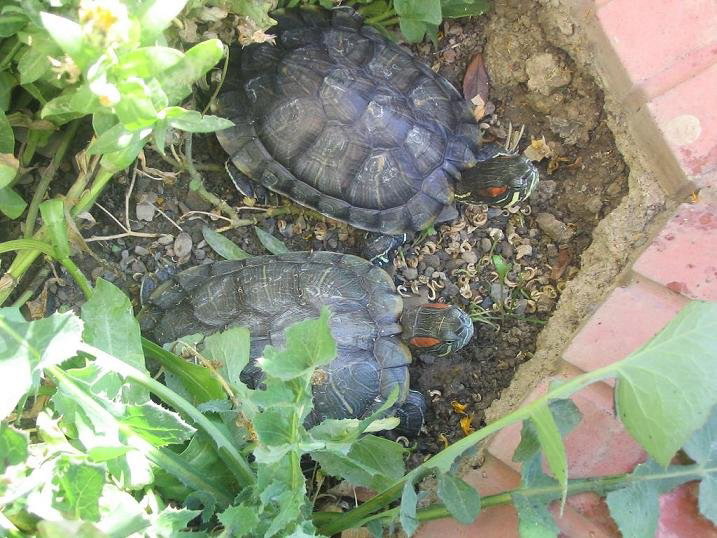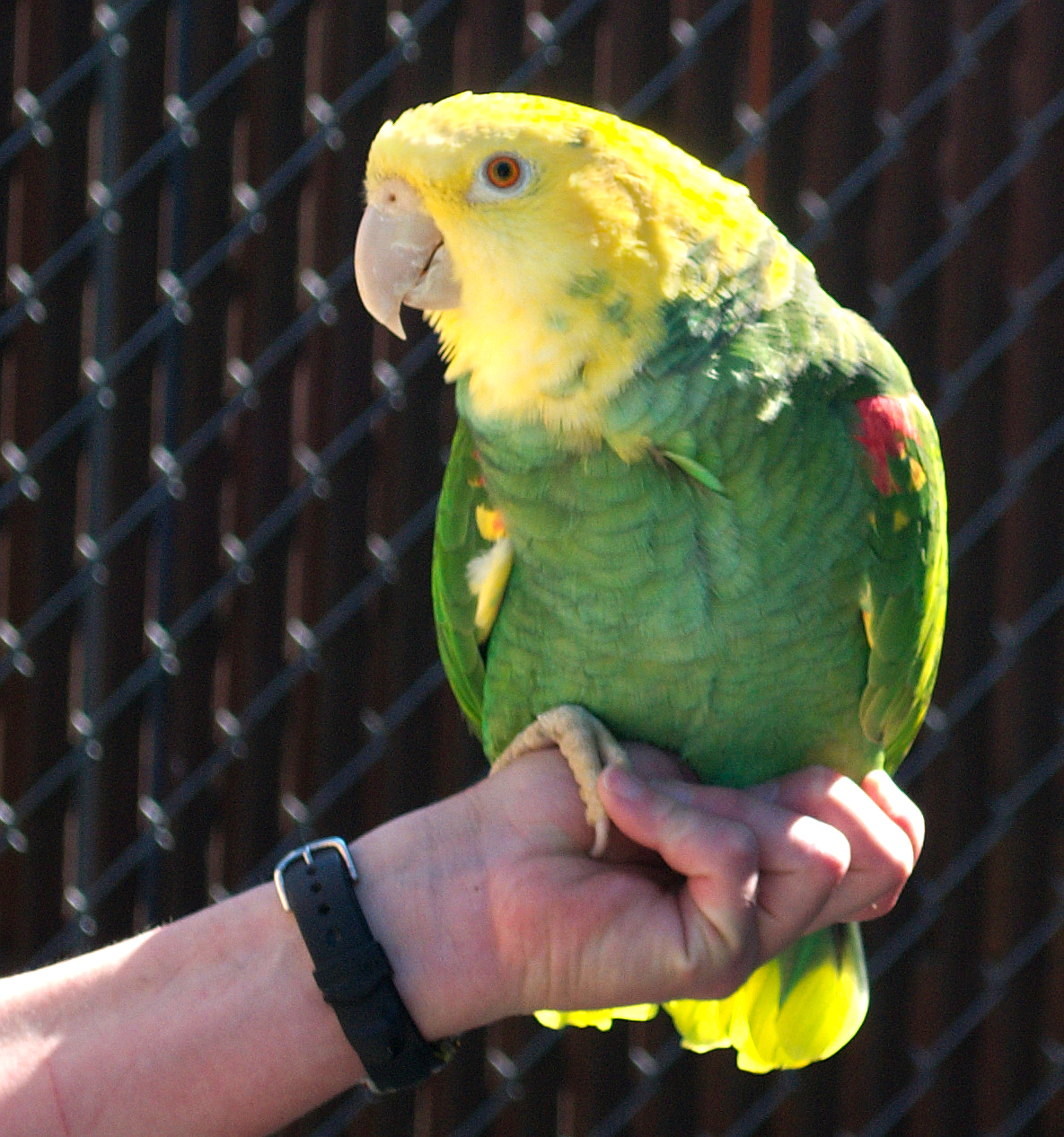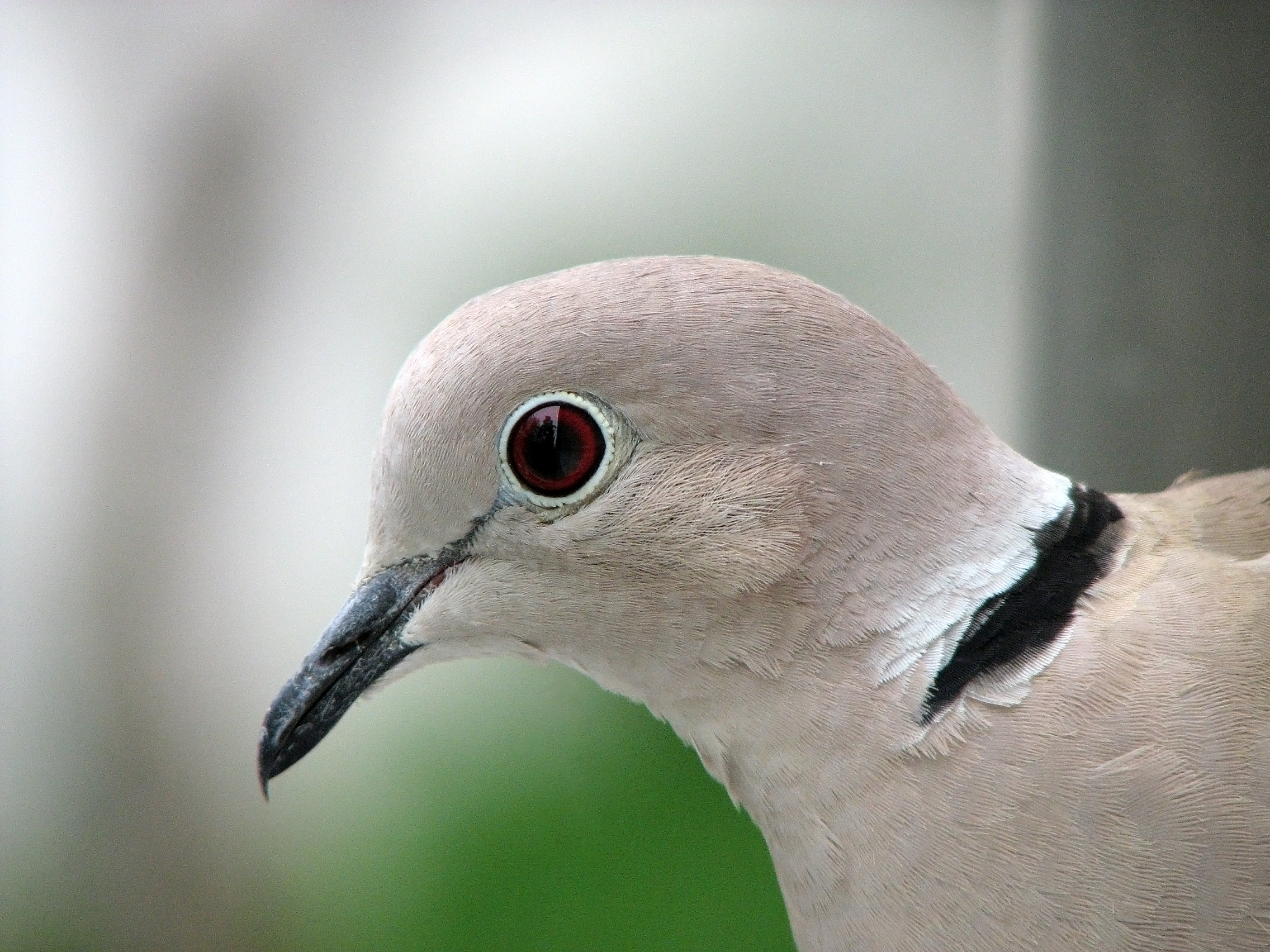|
List Of Invasive Species In California
Invasive species in California, the introduced species of fauna−animals and flora−plants that are established and have naturalized within California. Native plants and animals can become threatened endangered species from the spread of invasive species in natural habitats and/or developed areas (e.g. agriculture, transport, settlement). Animals Invasive animal species include: Mammals * Black rat *Nutria (also known as coypu) *Fallow deer *Axis deer (eradicated) *Feral cat *Feral dog *Wild boar Birds * Common starling *Red-masked parakeet * Mute swan *Rock dove * House sparrow *Eurasian collared dove *Japanese white-eye *Lilac-crowned parrot *Yellow-headed parrot Reptiles * Southern watersnake * Northern watersnake *Red-eared slider *Brown anole *Jackson's chameleon *Italian wall lizard *Mediterranean house gecko * Spiny softshell turtle Amphibians * American bullfrog *African clawed frog Fish * ... [...More Info...] [...Related Items...] OR: [Wikipedia] [Google] [Baidu] |
Invasive Species
An invasive species otherwise known as an alien is an introduced organism that becomes overpopulated and harms its new environment. Although most introduced species are neutral or beneficial with respect to other species, invasive species adversely affect habitats and bioregions, causing ecological, environmental, and/or economic damage. The term can also be used for native species that become harmful to their native environment after human alterations to its food webfor example the purple sea urchin (''Strongylocentrotus purpuratus'') which has decimated kelp forests along the northern California coast due to overharvesting of its natural predator, the California sea otter (''Enhydra lutris''). Since the 20th century, invasive species have become a serious economic, social, and environmental threat. Invasion of long-established ecosystems by organisms is a natural phenomenon, but human-facilitated introductions have greatly increased the rate, scale, and geographic range of ... [...More Info...] [...Related Items...] OR: [Wikipedia] [Google] [Baidu] |
Wild Boar
The wild boar (''Sus scrofa''), also known as the wild swine, common wild pig, Eurasian wild pig, or simply wild pig, is a suid native to much of Eurasia and North Africa, and has been introduced to the Americas and Oceania. The species is now one of the widest-ranging mammals in the world, as well as the most widespread suiform. It has been assessed as least concern on the IUCN Red List due to its wide range, high numbers, and adaptability to a diversity of habitats. It has become an invasive species in part of its introduced range. Wild boars probably originated in Southeast Asia during the Early Pleistocene and outcompeted other suid species as they spread throughout the Old World. , up to 16 subspecies are recognized, which are divided into four regional groupings based on skull height and lacrimal bone length. The species lives in matriarchal societies consisting of interrelated females and their young (both male and female). Fully grown males are usually solitary ... [...More Info...] [...Related Items...] OR: [Wikipedia] [Google] [Baidu] |
Brown Anole
The brown anole (''Anolis sagrei''), also known commonly as the Cuban brown anole, or De la Sagra's anole, is a species of lizard in the family Dactyloidae. The species is native to Cuba and the Bahamas. It has been widely introduced elsewhere, via the importation and exportation of plants where the anole would lay eggs in the soil of the pots, and is now found in Florida and as far north in the United States as southern Georgia, Texas, Louisiana, Tennessee, Mississippi, Alabama, Hawaii, and Southern California. It has also been introduced to other Caribbean islands, Mexico, and Taiwan. This species is highly invasive. In its introduced range, it reaches exceptionally high population densities, is capable of expanding its range very quickly, and both outcompetes and consumes many species of native lizards, like the green anole. The brown anole's introduction into the United States in the early 1970s has altered the behavior and negatively affected populations of the native Caro ... [...More Info...] [...Related Items...] OR: [Wikipedia] [Google] [Baidu] |
Red-eared Slider
The red-eared slider or red-eared terrapin (''Trachemys scripta elegans'') is a subspecies of the pond slider (''Trachemys scripta''), a semiaquatic turtle belonging to the family Emydidae. It is the most popular pet turtle in the United States, is also popular as a pet across the rest of the world, and is the most invasive turtle. It is the most commonly traded turtle in the world. The red-eared slider is native from the Midwestern United States to northern Mexico, but has become established in other places because of pet releases, and has become invasive in many areas where it outcompetes native species. The red-eared slider is included in the list of the world's 100 most invasive species. Etymology The red-eared slider gets its name from the small, red stripe around its ears, or where its ears would be, and from its ability to slide quickly off rocks and logs into the water. This species was previously known as Troost's turtle in honor of an American herpetologist ... [...More Info...] [...Related Items...] OR: [Wikipedia] [Google] [Baidu] |
Northern Watersnake
The common watersnake (''Nerodia sipedon'') is a species of large, nonvenomous, common snake in the family Colubridae. The species is native to North America. It is frequently mistaken for the venomous cottonmouth (''Agkistrodon piscivorus''). Common names Common names for ''N. sipedon'' include banded water snake, black water adder, black water snake, brown water snake, common water snake, common northern water snake, eastern water snake, North American water snake, northern banded water snake, northern water snake, spotted water snake, streaked snake, water pilot, and water snake. Description The common watersnake can grow up to in total length (including tail). Per one study, the average total length of females was , while that of males was . From known studies of this species in the wild, adult females can weigh between typically, while the smaller male can range from . The largest females can weigh up to while the largest males can scale . ''N. sipedon'' can be brown, g ... [...More Info...] [...Related Items...] OR: [Wikipedia] [Google] [Baidu] |
Southern Watersnake
The banded water snake or southern water snake (''Nerodia fasciata'') is a species of mostly aquatic, nonvenomous, colubrid snakes endemic to the Midwest and Southeastern United States. Geographic range ''N. fasciata'' is natively found from Indiana, south to Louisiana, and east to Florida. In 1992, its congener '' Nerodia sipedon'' (northern or common water snake) and it were found in three sites in California by the US Fish and Wildlife Service (USFWS). In 2009, more than 300 banded water snakes were caught in suburbs of Los Angeles by the Nerodia Working Group of USFWS. Then in May 2016, the species was found in the Colorado River basin near Yuma, Arizona. Further trapping did indeed catch large numbers of them, indicating that a thriving invasive population exists in that area. Description Adults of the banded water snake measure from in total length, with a record size (in the Florida subspecies) of in total length. In one study, the average body mass of adult banded ... [...More Info...] [...Related Items...] OR: [Wikipedia] [Google] [Baidu] |
Yellow-headed Parrot
The yellow-headed amazon (''Amazona oratrix''), also known as the yellow-headed parrot and double yellow-headed amazon, is an endangered amazon parrot of Mexico and northern Central America. Measuring in length, it is a stocky short-tailed green parrot with a yellow head. It prefers to live in mangrove forests or forests near rivers or other bodies of water. It is sometimes considered a subspecies of the yellow-crowned amazon (''Amazona ochrocephala''). It is a popular pet and an excellent talker. Poaching for the international pet trade has driven the species to near-extinction in the wild; around half of all wild-caught birds are thought to die in the process. Taxonomy This species is part of the ''Amazona ochrocephala'' complex, which also includes the yellow-naped amazon (''A. auropalliata''). This complex, which has been called "a taxonomic headache", is considered a single species by some authorities and split into three species by others. The split is mainly based on t ... [...More Info...] [...Related Items...] OR: [Wikipedia] [Google] [Baidu] |
Lilac-crowned Parrot
The lilac-crowned amazon (''Amazona finschi'') is a parrot endemic (ecology), endemic to the Pacific slopes of Mexico. Also known as Finsch's amazon parrot, amazon, it is characterised by green plumage, a maroon forehead, and a violet-blue crown and neck. The binomial of this bird commemorates the German naturalist and explorer Otto Finsch. In 2006, BirdLife International classified this species as Vulnerable species, vulnerable. In 2014, IUCN uplisted this species to Endangered. Description The plumage of an adult lilac-crowned amazon is primarily green with yellowish underparts and black edging. The forehead is a maroon colour with a light blue-lilac neck, nape, and crown. The cheeks and ear Covert feather, coverts are a greenish yellow that lacks the edging that is present in most of the plumage. The primary feathers are dark blue with the secondary feathers being green while being tipped with the same dark blue colouring. Furthermore, the initial five secondary feathers hav ... [...More Info...] [...Related Items...] OR: [Wikipedia] [Google] [Baidu] |
Japanese White-eye
The warbling white-eye (''Zosterops japonicus''), also known as the Japanese white-eye and mountain white-eye, is a small passerine bird in the white-eye family. The specific epithet is occasionally written ''japonica'', but this is incorrect due to the gender of the genus. Its native range includes much of East Asia, including the Russian Far East, Japan, Indonesia, Korea, and the Philippines. It has been intentionally introduced to other parts of the world as a pet and as pest control, with mixed results. As one of the native species of the Japanese islands, it has been depicted in Japanese art on numerous occasions, and historically was kept as a cage bird. Taxonomy The warbling white-eye was described by the ornithologists Coenraad Jacob Temminck and Hermann Schlegel in 1845 from a specimen collected in Japan. They coined the binomial name ''Zosterops japonicus''. The English name "Japanese white-eye" was formerly used for ''Zosterops japonicus'' and what are now the Philip ... [...More Info...] [...Related Items...] OR: [Wikipedia] [Google] [Baidu] |
Eurasian Collared Dove
The Eurasian collared dove (''Streptopelia decaocto'') is a dove species native to Europe and Asia; it was introduced to Japan, North America and islands in the Caribbean. Because of its vast global range and increasing population trend, it has been listed as Least Concern on the IUCN Red List since 2014. Taxonomy ''Columba decaocto'' was the scientific name proposed by the Hungarian naturalist Imre Frivaldszky in 1838 who described a Eurasian collared dove. The type locality is Plovdiv in Bulgaria. It is now placed in genus ''Streptopelia'' that was introduced in 1855 by the French ornithologist Charles Lucien Bonaparte. The Burmese collared dove (''S. xanthocycla'') was formerly considered a subspecies of the Eurasian collared dove, but was split as a distinct species by the IOC in 2021. Two other subspecies were formerly sometimes accepted, ''S. d. stoliczkae'' from Turkestan in central Asia and ''S. d. intercedens'' from southern India and Sri Lanka. They are now consi ... [...More Info...] [...Related Items...] OR: [Wikipedia] [Google] [Baidu] |
House Sparrow
The house sparrow (''Passer domesticus'') is a bird of the sparrow family Passeridae, found in most parts of the world. It is a small bird that has a typical length of and a mass of . Females and young birds are coloured pale brown and grey, and males have brighter black, white, and brown markings. One of about 25 species in the genus ''Passer'', the house sparrow is native to most of Europe, the Mediterranean Basin, and a large part of Asia. Its intentional or accidental introductions to many regions, including parts of Australasia, Africa, and the Americas, make it the most widely distributed wild bird. The house sparrow is strongly associated with human habitation, and can live in urban or rural settings. Though found in widely varied habitats and climates, it typically avoids extensive woodlands, grasslands, and deserts away from human development. It feeds mostly on the seeds of grains and weeds, but it is an opportunistic eater and commonly eats insects and many o ... [...More Info...] [...Related Items...] OR: [Wikipedia] [Google] [Baidu] |
Rock Dove
The rock dove, rock pigeon, or common pigeon ( also ; ''Columba livia'') is a member of the bird family Columbidae (doves and pigeons). In common usage, it is often simply referred to as the "pigeon". The domestic pigeon (''Columba livia domestica'', which includes about 1,000 different breeds) descended from this species. Escaped domestic pigeons have increased the populations of feral pigeons around the world. Wild rock doves are pale grey with two black bars on each wing, whereas domestic and feral pigeons vary in colour and pattern. Few differences are seen between males and females. The species is generally monogamous, with two squabs (young) per brood. Both parents care for the young for a time. Habitats include various open and semi-open environments. Cliffs and rock ledges are used for roosting and breeding in the wild. Originally found wild in Europe, North Africa, and western Asia, pigeons have become established in cities around the world. The species is abundant, ... [...More Info...] [...Related Items...] OR: [Wikipedia] [Google] [Baidu] |








_immature_Udaipur.jpg)
